

WARM-WEATHER VEGETABLES
Plant these favorites, and you’ll have the fixins for the ultimate veggie plate
POLE BEANS

WHY WE LOVE THEM: Great for beginners, pole beans need little maintenance and yield a big harvest.
GET GROWING: Sow seeds ½ to 1 inch deep along a sturdy trellis or support. Plant in full sun in rich, well-drained soil.
HOW TO HARVEST: Pick pole beans when they are 4 to 6 inches long. Yardlong beans can grow more.
SECRET TO SUCCESS: Pick beans regularly, so plants will continue to produce.
TOMATOES

WHY WE LOVE THEM: Whether you like yours fried green or sliced on a sandwich, a fresh-picked tomato warmed from the sun is hard to beat.
GET GROWING: The easiest way to grow tomatoes is from transplants, but those may be hard to find if you want heirloom selections. In that case, growyour own transplants from seed. Once all danger of frost has passed and you’re ready to plant, choose a spot that gets at least six hours of sun. Strip off all but the top four leaves, and plant so that only the leafy tops show aboveground. Top-dress with a slow-release fertilizer, such as Dynamite Flowers & Vegetables 13-13-13. Mulch; then water.
HOW TO HARVEST: Pick them green, or wait for them to ripen on the vine.
SECRET TO SUCCESS: Keep plants consistently moist to prevent fruit from cracking.
SWEET POTATOES
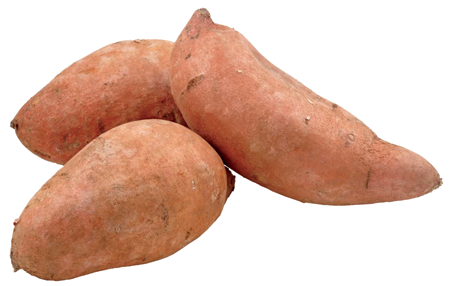
WHY WE LOVE THEM: Thanksgiving Day just wouldn’t be the same without sweet potato casserole and pie.
GET GROWING: Start with young plants called slips. Plant them anytime after the last frost until early summer, in full sun in rich, well-drained soil. Set slips 4 to 5 inches deep in mounded rows about 10 inches high. Space 12 to 15 inches apart.
HOW TO HARVEST: They should reach maturity about 100 to 120 days after planting. Be sure to harvest them before frost.
SECRET TO SUCCESS: Sweet potatoes are affected by potassium deficiencies in soil, which cause roots to be long and slender instead of short and thick. Do a soil test before planting.
CUCUMBERS

WHY WE LOVE THEM: Their refreshing taste is just right for hot summer days.
GET GROWING: Plant seeds or set out transplants two weeks after the last frost in a sunny spot in loose, well-drained soil. Choose bush types if space is at a premium. Vining types need room to spread out. Train them on trellises to save space.
HOW TO HARVEST: You can begin to harvest when your cucumbers are about 3 inches long.
SECRET TO SUCCESS: Bitter cucumbers are the result of uneven watering. Keep the soil evenly moist. Seedy cucumbers have been left on the vine too long.
EGGPLANTS
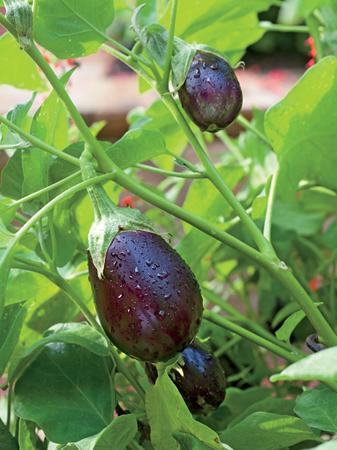
WHY WE LOVE THEM: You’ll find this culinary globetrotter in many different cuisines, from Mediterranean to Indian. Eggplants come in a range of colors, from violet to chartreuse to fuchsia, as well as a range of shapes and sizes.
GET GROWING: Eggplants are very sensitive to cold temperatures. Don’t plant until the soil warms. Plant in full sun in rich soil.
HOW TO HARVEST: To avoid the bitterness and seediness that come with overmaturity, harvest when eggplants reach two-thirds their maximum size. Use shears to cut the fruit from the plant, leaving an inch or so of stem on the fruit.
SECRET TO SUCCESS: To maintain steady growth, keep the soil evenly watered and well mulched.
OKRA
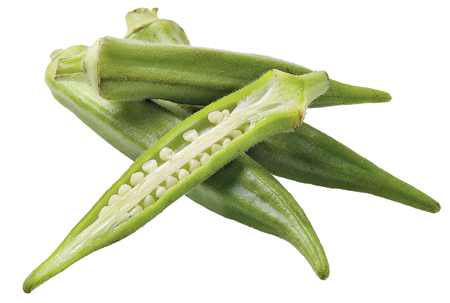
WHY WE LOVE IT: This Southern staple thrives in long, hot summers and bears pods from July to frost.
GET GROWING: Plant no sooner than two weeks after the last frost in a sunny spot in rich, moist soil.
HOW TO HARVEST: Okra pods mature quickly, sometimes just four days after flowers open. Cut pods when they are about 3 inches long (any longer, and they can be tough).
SECRET TO SUCCESS: Keep the soil moist, but be careful not to overwater because plants will produce more foliage than pods.
HOT PEPPERS & SWEET PEPPERS
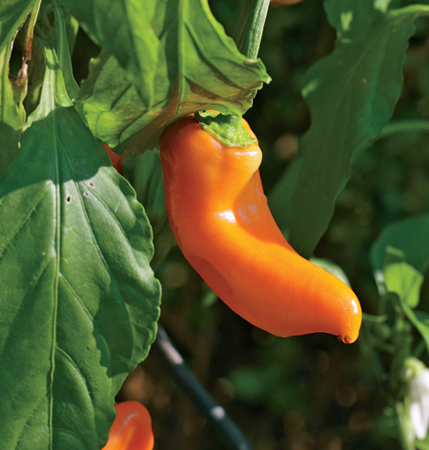
WHY WE LOVE THEM: Whether you’re after a mild bell or a hot habanero that packs a mighty punch, peppers come in a range of colors and flavors.
GET GROWING: Plant both hot and sweet peppers in full sun in well-drained soil.
HOW TO HARVEST: You can harvest peppers as soon as they reach a usable size, but for the most flavor (sweet or hot), allow them to ripen on the vine.
SECRET TO SUCCESS: Sometimes peppers stop producing when the weather gets too hot. Keep them watered and mulched, and they will produce again when the weather cools some.
YELLOW SQUASH & ZUCCHINI
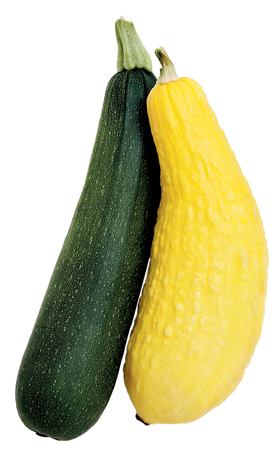
WHY WE LOVE THEM: These fast-growing summer squash are some of the most productive vegetables in the garden.
GET GROWING: Plant them immediately after the last frost, then again three weeks later to extend the harvest into fall. Yellow squash and zucchini need a sunny spot and rich, well-drained soil.
HOW TO HARVEST: Summer squash will quickly reach harvest size three to seven days after the flowers open, so keep an eye on them. Pick yellow squash when it’s 4 to 6 inches long, zucchini when it’s 6 to 8 inches long.
SECRET TO SUCCESS: Yellow squash can be found in both straightneck and crookneck types. Just choose the one you like best. All summer squash are susceptible to squash vine borers. You can protect against borers by wrapping the stem with cardboard, pieces of aluminum foil, or other barriers. Pull and destroy infected plants immediately.
COOL-WEATHER VEGETABLES

Take advantage of the pleasant temperatures and low humidity of early spring and fall, and add these favorites to your garden
LETTUCE
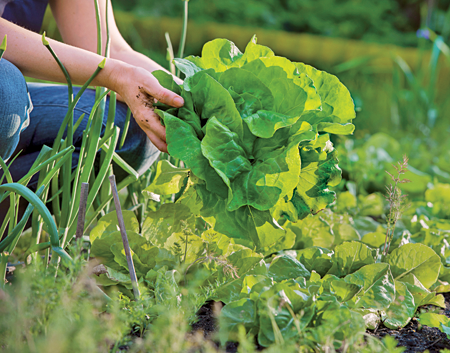
WHY WE LOVE IT: Planting your own salad garden means more variety than you can find at the grocery store.
GET GROWING: Plant in a spot that gets four to six hours of daily sun in loose, well-drained soil, rich in organic matter. Lettuce seeds germinate best in cool soil. For spring plants, start two to four weeks before the last expected frost. That’s usually February in the Middle South and March in the Upper South. In the fall, get a head start on the first frost by using transplants rather than seeds. In the Lower and Coastal South, you have time for seeds and transplants. In the Tropical South, wait until late fall to grow plants from seeds for a winter or early spring harvest.
HOW TO HARVEST: Pick outside leaves first on loose-leaf types. Plants will continue to grow and produce. Cut entire head for butterhead and Romaine.
SECRET TO SUCCESS: Lettuce can take a light frost, but hard frosts can melt plants. Some selections are more cold tolerant, and some can take heat better than others. Check the plant tags or seed packets, and plant accordingly.
BEETS
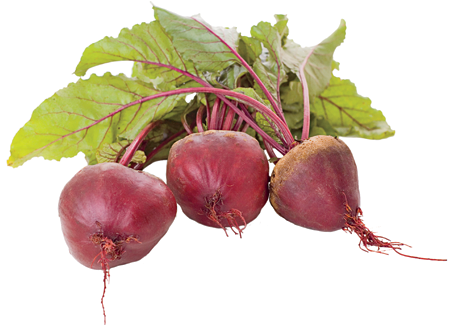
WHY WE LOVE THEM: Fresh beets are a far cry from the slimy slices that come out of a can.
GET GROWING: In the spring, sow seeds in full sun, two to four weeks before the last frost. Make three successive plantings, two to three weeks apart, for a steady supply until early summer. Repeat in late summer; make three sowings about three weeks apart.
HOW TO HARVEST: Pull roots when they are 1 to 3 inches in diameter. Harvest greens by snapping off the outer leaves when they are 6 inches long.
SECRET TO SUCCESS: Soak seeds overnight to speed germination.
BROCCOLI
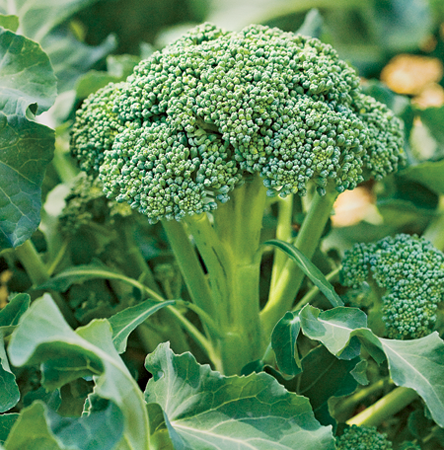
WHY WE LOVE IT: Fun to grow, broccoli rewards you with a tasty crop that can be steamed or eaten raw on a veggie tray.
GET GROWING: Always start broccoli from transplants. In spring, plant four weeks before the last frost. For a fall crop, plant in late summer or early fall. A hard freeze will kill plants. Plant in full sun in soil that’s rich with organic matter. Set plants 18 to 24 inches apart.
HOW TO HARVEST: Cut the central head from the plant just below where it begins to branch. Side shoots are ready to harvest two to three weeks after removing the central head.
SECRET TO SUCCESS: Keep the soil moist to promote steady growth. Broccoli will flower in hot weather. Cut the heads, no matter how small, before they flower.
COLLARDS

WHY WE LOVE THEM: Southerners worth their salt know these bring fortune for the year to come if eaten on New Year’s Day. Grow your own for a dose of good luck in spring and fall.
GET GROWING: Plant them in early spring, or, depending on where you live in the South, late summer or early fall. Space multiple rows 2 to 3 feet apart in full sun. Within each row, set out transplants 18 to 24 inches apart. If you sow seeds, thin seedlings to that same distance.
HOW TO HARVEST: Use a small knife or clippers to cut the entire plant about 4 inches from the ground; the plant will send up new leaves from the remaining stem. You can also pop off single leaves by hand, starting from the bottom.
SECRET TO SUCCESS: Choose a fertilizer that’s high in nitrogen to promote leaves, not flowers. Try Dynamite Organic All-Purpose (10-2-8). Apply according to label directions.
POTATOES
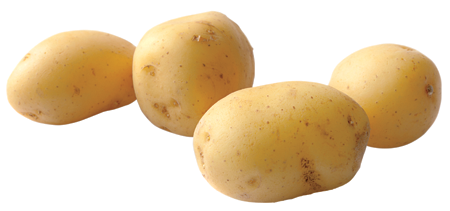
Wait to wash your potatoes until Just before you are ready to cook.
WHY WE LOVE THEM: You can grow them in the ground or in pots.
GET GROWING: For a late spring harvest, plant four to six weeks before the last frost. For fall, plant in mid-to late summer four to six weeks before the first frost.
HOW TO HARVEST: Dig new potatoes about eight weeks after planting. For fully mature potatoes, wait for foliage to begin to turn yellow and die; leave them in the ground two to three weeks longer.
SECRET TO SUCCESS: Several days before planting, cut seed potatoes into pieces about the size of an egg, with each piece having at least two eyes.
SNOW PEAS
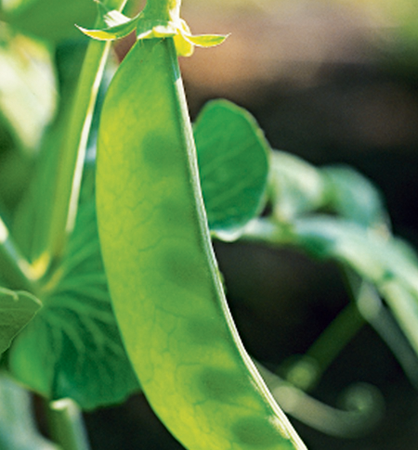
WHY WE LOVE THEM: You can pop these sweet, edible pods straight from the vine into your mouth.
GET GROWING: Plant in a spot that gets four to six hours of sun in loose, well-drained soil that’s rich in organic matter.
HOW TO HARVEST: Pick pods when they are 1 ½ to 2 inches long. They will be tough if you let them get bigger.
SECRET TO SUCCESS: Thin seedlings to 4 inches apart. Provide peas with a trellis to climb for easy picking without bending down.
Add a Little Color to Your Plate
All of these leafy greens have a touch of red and like the same growing conditions as collards. Plant in your vegetable patch, or mix them in the garden with cool-weather bedding plants, such as mums and pansies.
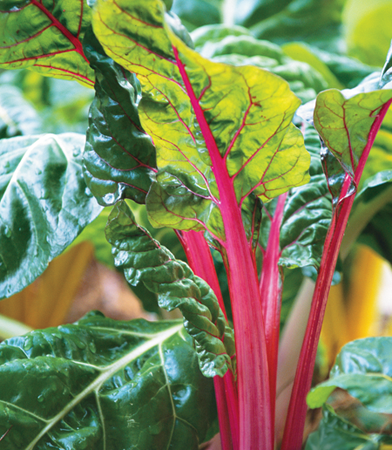
‘RHUBARB’ SWISS CHARD
As ornamental as they are tasty, bright stems glow in the autumn sun. For spring and summer harvests, plant in spring, two to four weeks before the last frost. For fall harvest, plant in summer 10 to 12 weeks before the first frost.

‘REDBOR’ KALE
Attractive purple ruffled leaves and red stems add color and texture to the garden and to your plate. For a spring harvest, plant four to six weeks before the last frost. For a fall and winter harvest, plant 6 to 10 weeks before the first frost.
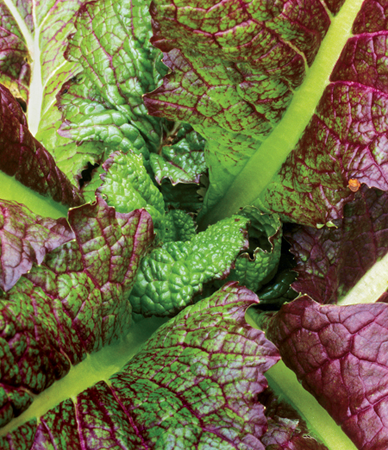
‘RED GIANT’ MUSTARD
Green leaves tinged with purple make a striking focal point in a container. Leaves grown in spring will not be as sweet as those grown in fall. For a spring harvest, sow seeds 2 to 4 weeks before the last frost. In fall, sow four to six weeks before the first frost.
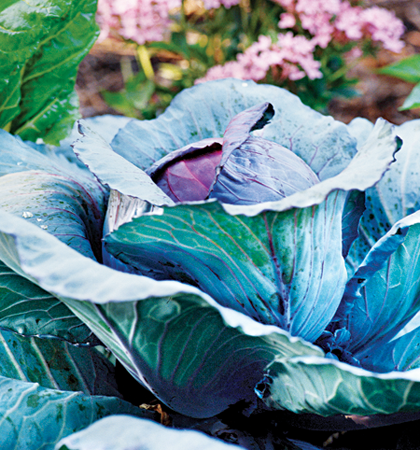
PURPLE CABBAGE
Why settle for plain green? Use purple cabbage to add bright color to your vegetable garden and your coleslaw. In spring, set out transplants four to six weeks before the last frost. In fall, set out four to six weeks before the first frost.

EASY-TO-GROW FRUITS
Give these plants a try for sun-ripened berries and trees heavy with the season’s bounty
‘IMPROVED MEYER’ LEMONS
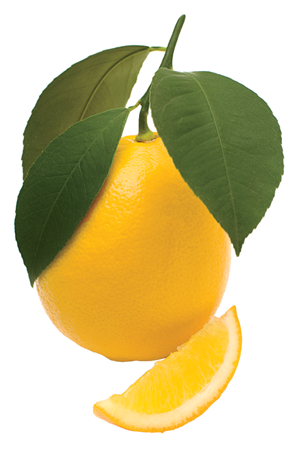
WHY WE LOVE THEM: A virus-free cross between a lemon and a Mandarin orange, its glossy leaves and sweet-scented blooms make this an attractive tree to place in a patio pot.
GET GROWING: In the Tropical and mildest parts of the Coastal South, plant in the ground in a sunny spot with well-drained soil. Elsewhere, plant in a container that’s at least 18 inches in diameter. Bring pots indoors or overwinter in a garage with bright light.
HOW TO HARVEST: For best flavor, wait until lemons have ripened completely; twist from tree.
SECRET TO SUCCESS: Citrus plants are heavy feeders. Fertilize with a product made especially for citrus, such as Citrus-tone, in late winter, late spring, and fall.
APPLES
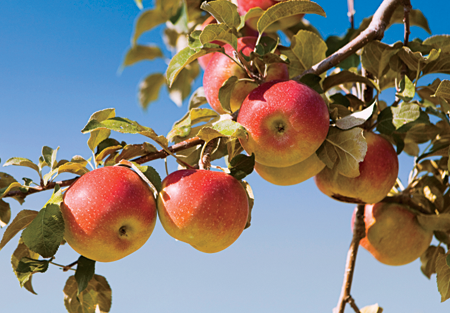
WHY WE LOVE THEM: Crisp apples right off the tree beat the taste of store-bought ones.
GET GROWING: Given plenty of sun, apple trees grow in almost any well-drained soil and take summer drought. You’ll find three different sizes: standard (matures gat 20 to 25 feet tall and wide), semi-dwarf (10 to 20 feet), and dwarf (5 to 8 feet). Dwarf and semi-dwarf are good choices for most people; they take up less room and bear fruit at a young age.
HOW TO HARVEST: Firmly grasp fruit, and twist off of stem.
SECRET TO SUCCESS: Self-pollinating selections such as ‘Golden Delicious’ and ‘Grimes Golden’ will bear fruit without having another apple tree around. But most selections require cross-pollination with a different selection to bear fruit. If you are short on space, buy a multiselection tree, which will have up to 5 different types grafted onto a single trunk and rootstock.
BLACKBERRIES
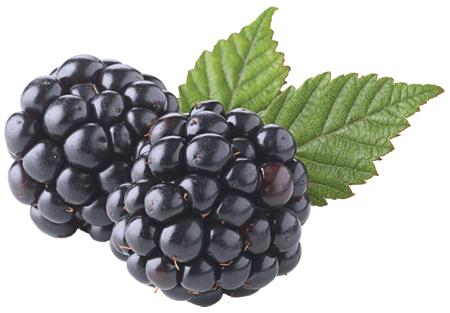
WHY WE LOVE THEM: Two words: blackberry cobbler.
GET GROWING: Blackberries like a sunny spot with well-drained, fertile soil. Plant in fall or winter, spacing them 3 to 4 feet apart. Mulch with pine straw or shredded pine bark to conserve moisture and discourage weeds.
HOW TO HARVEST: When ripe, berries will pull away from the plant easily. Look for a dull black color. If berries are red or purple, they aren’t ready yet.
SECRET TO SUCCESS: Apply lime sulfur in late winter to control pests. You can also train them against a wall or fence to make harvesting easy.
FIGS

WHY WE LOVE THEM: Nothing compares to the sweet taste of a fig plucked straight from the tree.
GET GROWING: Fig trees thrive in the heat of the Lower, Coastal, and Tropical South. Plant near a wall with Southern exposure in the Middle South, so they can benefit from reflected heat. In the Upper South, go with cold-hardy selections, such as ‘Brown Turkey’ and ‘Celeste.’
HOW TO HARVEST: A ripe fig should feel soft like a ripe peach but not mushy. Pull up on it, and it should come off easily in your hand.
SECRET TO SUCCESS: During the first year, as trees become established, water regularly and mulch.
STRAWBERRIES

Don’t judge ripeness by size. Strawberries are ready to pick when they turn deep red.
WHY WE LOVE THEM: These sweet, juicy berries can grow in the ground or in a container, so you don’t need a lot of space. Growing them at home means you can harvest at the peak of flavor.
GET GROWING: Whether you choose the June-bearing (produce one crop a year in late spring or early summer) or Everbearing (produce fewer runners but set fruit over a longer period) types, they both like full sun and well-drained soil.
HOW TO HARVEST: Size doesn’t determine when to harvest. Pick berries when they are plump, firm, and fully red—even if they are small.
SECRET TO SUCCESS: Plants need about 1 inch of water per week in the growing season, more when bearing fruit. If birds become a problem, cover your plants with netting.
ORIENTAL PERSIMMONS
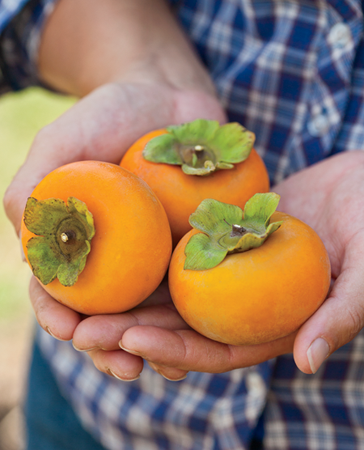
WHY WE LOVE THEM: Unlike their American cousins (Diospyros virginiana), which are sour before they are soft and ripe, Oriental persimmons (D. kaki) are sweet from the start and bear bigger fruit.
GET GROWING: Trees reach 25 to 30 feet wide. Plant in full sun in well-drained soil.
HOW TO HARVEST: Use sharp clippers to snip fruit from the branches. Don’t harvest fruit when it’s green. Once it starts to show color, you can harvest, and fruit will ripen on its own.
SECRET TO SUCCESS: Prune young trees in spring to open up the center and provide well-spaced branches aiming outward. Pruning is seldom needed after that.
BLUEBERRIES
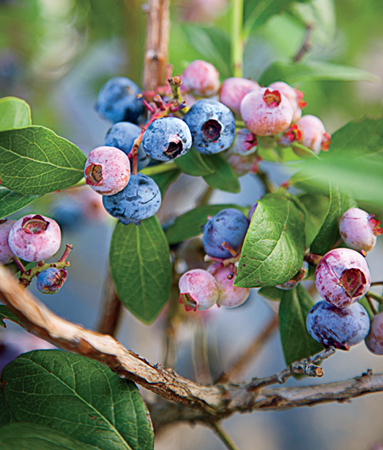
WHY WE LOVE THEM: Besides the tasty fruit, blueberries make a handsome shrub in the landscape.
GET GROWING: Choose a sunny spot for the most fruit. Blueberries prefer slightly moist, well-drained, acid soil (pH 4.5-5.5), rich in organic matter. Position with the top half of the root ball resting above the soil.
HOW TO HARVEST: Blueberries don’t ripen all at once. You’ll see green, pink, and blue all on the same bush. If there’s a hint of pink on a berry, that means it’s not ripe yet.
SECRET TO SUCCESS: Rabbiteye and Southern highbush selections do well in the Middle, Lower, and Coastal South. Choose Northern highbush selections in the Upper and Middle South. Choose two or more selections for optimal pollination and lots of fruit.

GARDEN-FRESH HERBS
Spice up your recipes and your landscape with these flavorful additions
BASIL
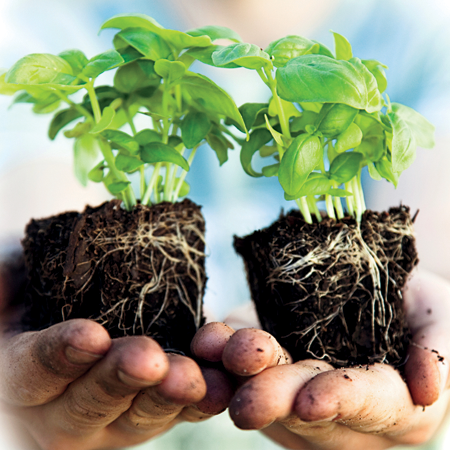
WHY WE LOVE IT: Great for beginners, basil is one of the easiest herbs to grow. Its flavor profile goes from sweet to citrusy to spicy, depending on the selection.
GET GROWING: Plant in May in moist, well-drained soil in a spot that gets full sun with afternoon shade. You can plant a second crop in July to extend the harvest into fall.
HOW TO HARVEST: Clip regularly to force new leaves. Cut about one-third of a stem at a time, making each cut at a leaf node.
SECRET TO SUCCESS: Eventually, your basil will bolt. To extend the life of the plants, pinch off flower buds as they appear.
SAGE
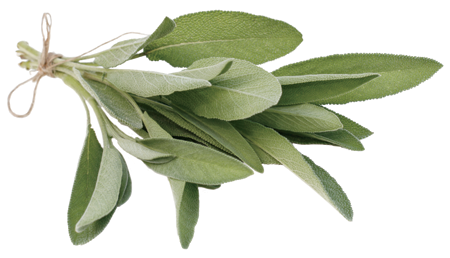
WHY WE LOVE IT: Perennial in most of the South, sage comes in a range of colorful hues, including gold, green, purple variegated, and tricolor.
GET GROWING: Plant in fall or spring in full sun to part shade in well-drained soil.
HOW TO HARVEST: Go easy on plants the first year, then snip as needed.
SECRET TO SUCCESS: Prune each year in early spring, cutting out the oldest growth to stimulate new growth.
THYME
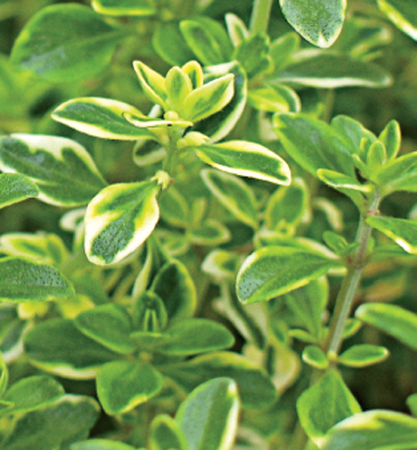
WHY WE LOVE IT: Fine-textured foliage and an aromatic scent make it a no-fuss addition to the garden. Deer resistance is a plus as well.
GET GROWING: Plant in spring or fall in full sun or part shade in well-drained soil.
HOW TO HARVEST: Strip the leaves from woody stems anytime you need them.
SECRET TO SUCCESS: Choose upright English thyme for a shrublike appearance or creeping thyme for a ground cover. Provide light shade in the hottest climates for best results.
DILL

WHY WE LOVE IT: The delicate flavor of dill is the perfect accompaniment to fish and, of course, pickles! Yellow flowers in late spring make pretty additions to arrangements.
GET GROWING: Plant in spring or fall in full sun in moist, fertile, well-drained soil.
HOW TO HARVEST: Snip anytime. When dill begins to flower and set seed, harvest the entire plant.
SECRET TO SUCCESS: Dill grows easily from seed, but to get a headstart, look for transplants at your local nursery. Don’t plant near fennel, or the two will cross-pollinate.
OREGANO
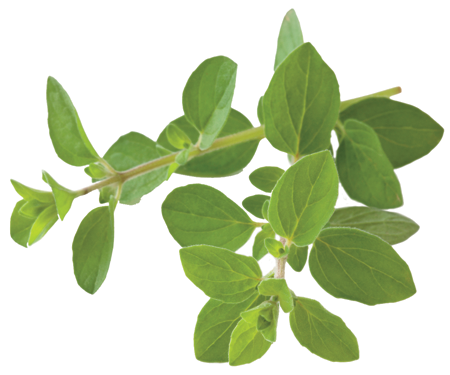
WHY WE LOVE IT: Besides the flavor, the green foliage makes a nice foil for flowers in the garden in summer.
GET GROWING: Plant after the last spring frost in full sun to partial shade, in well-drained soil.
HOW TO HARVEST: Snip sprigs as soon as the plant reaches 6 inches in height.
SECRET TO SUCCESS: To prevent disease, be sure to provide excellent drainage.
CHIVES

WHY WE LOVE THEM: Every part is edible. In spring and summer, chives send up globe-shaped flowers that make a pretty garnish.
GET GROWING: Sow seeds in spring or fall in full sun in moist, well-drained soil.
HOW TO HARVEST: Select dark green foliage from the outside of the clump, and cut it about ½ inch above the soil level.
SECRET TO SUCCESS: Avoid cutting down an entire clump at once. Plants need some leaves to ensure future growth.
ROSEMARY

WHY WE LOVE IT: A handsome evergreen shrub, rosemary lends wonderful fragrance to the garden.
GET GROWING: Plant in spring or fall in full sun in well-drained soil.
HOW TO HARVEST: Cut stems anytime, and then strip leaves from stems for cooking. Unlike most herbs, rosemary has a stronger flavor when dried, so use more if it’s fresh.
SECRET TO SUCCESS: Rosemary can be sensitive to the cold. In the Upper and Middle South, choose cold-hardy selections, such as ‘Arp,’ ‘Hill’s Hardy,’ and ‘Irene.’
PARSLEY
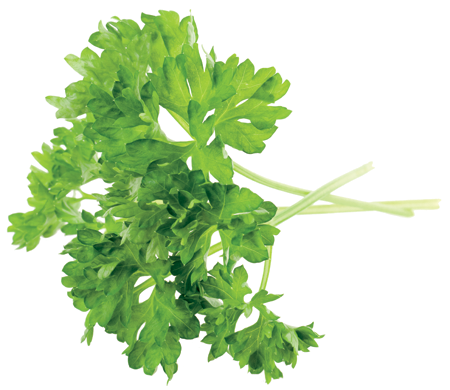
WHY WE LOVE IT: The curled type is popular as a garnish and looks pretty as a filler in a flower border or pot. Italian flat-leaf parsley holds its flavor better when heated.
GET GROWING: Plant in moist, fertile, well-drained soil.
HOW TO HARVEST: Snip leaf stalks from the outside, cutting no more than 1 inch above the soil.
SECRET TO SUCCESS: Parsleyworm caterpillars, which will turn into swallowtail butterflies, are attracted to parsley. Instead of killing them, set out a few extra plants to share.